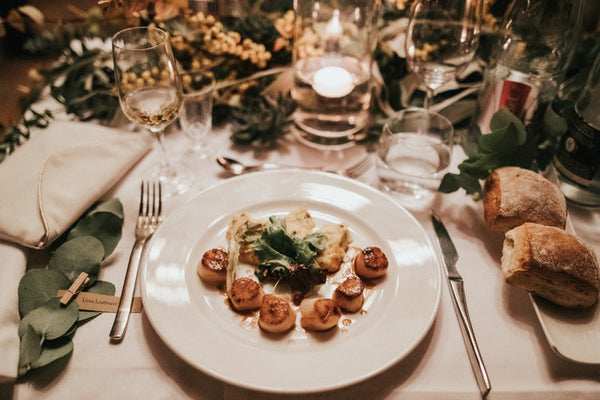
Wine Trends: Alcohol Levels in Wine
The question of how intrinsic alcohol is to the enjoyment of wine was discussed at some length a while back, amongst some of the more thoughtful bloggers and wine writers of the world. The consensus seems to be that, mostly, alcohol is indeed an important part of the picture and this is conveniently confirmed by just how awful non-alcoholic wines currently are, without needing to touch upon the pleasant numbing effect of having a few drinks. Yet despite that, my personal experience is that consumers are intentionally opting for wines with lower levels of alcohol. Just in the last few weeks, I've seen this first-hand on several occasions, in slightly different guises. From a Polish man looking for help choosing wine but didn't want "anything Parkerised, you know, anything over 14% alcohol'" to a surprising statement from a Madrid-based writer that high levels of alcohol in quality wine "goes against everything I've been taught."
Ignoring the obvious, logical flaws in thinking like the above, there are clearly sound reasons for wanting to drink wines with lower levels of alcohol. I've thought about it and whilst there's some overlap, they seem to mainly fall into one of three categories: Health, Taste and Fashion.

Health
Whilst health authorities across the world differ on what is considered to be a 'safe' amount of alcohol to drink, it's commonly accepted that drinking too much has a pretty good chance of hurting you: ethanol, after all, is a proven carcinogen. In fact, if there is discussion about how much is acceptable of any substance, it's a fair assumption that it's probably not great for you, on the whole. The same could be said of anything, of course, and a life without alcohol is considerably less interesting than a life with it. I drink wine on an almost daily basis and as a result, it pays to be conscious of both quantity, but also the strength of the wine. There's an enormous difference between a 9.5% ABV Mosel Riesling and a 16% ABV Chateauneuf du Pape, or even a 12% ABV Albariño and a 15.5% ABV Garnacha. If you're drinking regularly, opting for wines with lower levels of alcohol will have a tangible benefit.
There's also the consideration of how alcohol affects your day to day activities. Whilst the pleasures of alcoholic inebriation are an undeniably large part of why we drink, it's not always convenient to be tipsy throughout the day, and for example, I tend to consume the majority of the wine I drink around lunch. Needless to say, too much powerful wine and productivity drops off severely afterwards, whereas a glass or two of Mosel Kabinett and I'm bounding around, full of energy (The jury's out on which version my fiance dislikes the most). Add into the mix the dangers of driving or operating any sort of machinery under the influence, and there are clear benefits from a health perspective to opt for lighter wines.
Taste
There's an unusual group of people in the world, who choose wine primarily on how good it tastes. Apparently they haven't learnt that if you chill it down enough, or dilute it with sparkling water, it doesn't taste of much. However, as they persist in going to the effort of serving wine at correct temperatures and often in the right glassware, all in the hope of enhancing flavours and textures, it's worth considering how alcohol might affect this.
High alcohol levels in wine typically mean one of two things. Either the grapes are grown in a very warm, dry climate or have been left to ripen for extended periods of time past the typical harvest date. Sometimes, it's even a combination of the two. Therefore, it's not just the alcohol to consider but the invariably riper, often jammy or stewed fruit flavours and aromas that tend to coincide with potent wines. On the palate, wines with high levels of alcohol will struggle more to maintain balance. Ever had a wine and it prickled your mouth, like there's something hot inside it? A warming sensation in the throat? That would be high levels of alcohol, without enough acidity or flavour intensity to keep it in check. Highly alcoholic wines also tend to struggle to deliver precise flavours, often tasting blowsy and generic, and often have a sensation of sweetness due to the high levels of glycerol. Tannins are typically, but not always, softer and smoother, and the wine will feel heavier and more full bodied.
This all sounds mainly negative but it's assuming an unbalanced, poorly made wine: the inverse argument could easily have been made for cool-climate wines with low levels of alcohol. There are thousands of superb wines in the world with high levels of alcohol, with precise, complex flavours, refreshing acidity, finely-grained tannins and excellent flavour intensity. The trick, as in all wine, is finding that balance. It also highlights the dangers of using alcohol as a barometer for choosing wine.
Take the example of the Polish gentleman, looking for typical Spanish wine with less than 14% ABV This excludes pretty much all of southern Spain, 95% of Garnacha based wines (Garnacha accumulates sugar rapidly and early harvesting runs the risk of unripe flavours and phenolics), most Ribera del Duero and even the riper examples from cooler regions such as Galicia and Rioja. As a result, I was only able to recommend a handful of wines, some of which he found too tannic and tough. Alcohol levels mean very different things depending on where the grapes were grown; 14% in AOC St. Estephe is an unusually ripe, powerful wine, whereas in DO Toro it's positively lightweight!

Fashion
Increasingly, it's fashion that seems to be playing the greatest role when it comes to alcohol levels. Jancis Robinson has conveniently just published something along the same lines, talking about the division in wine styles. More and more producers are now focusing on freshness, more precise flavours, higher levels of acidity and delicacy in their wines. Ambient yeasts are in, cultured out; early harvesting is preferred over grapes harvested at full phenolic ripeness; new vineyards are being planted at ever-increasing altitudes and so on. This is no bad thing in and of itself and it's fair to say that my own personal tastes tend towards these fresher styles of wines. However, as with every fashion swing, dogma has an unpleasant tendency to creep into the conversation.
Take my second example of the person who believed that high levels of alcohol were incompatible with quality wine. Without getting into why this is categorically untrue, it does showcase how easily certain wine styles and practices can influence consumers. In wine the most obvious example of this is so-called 'natural' wine, where there are no additions or adjustments of any kind in the winery (sugar, acid, tannins and so on), no cultured yeasts are used and wines are generally unfined and unfiltered. With minimal spraying and treatments in the vineyards, fungi and disease around harvest become even more of an issue, so grapes are often harvested much earlier, with lower levels of sugars and higher levels of acidity. Ambient yeasts don't tend to be able to convert high levels of sugar into alcohol past a certain point anyway, and there's no adjustment for the lower levels of acidity if grapes are over-ripened (as grapes ripen, sugars increase and acidity decreases so most warmer climates readjust acidity levels, mainly using tartaric acid). The net result is usually a wine with a lower level of alcohol than its peers; refreshing, often delicious but certainly not the only way to produce good wine.
Overall, it has to be said that the move towards freshness and delicacy has been well received across the wine-drinking world. From the 1990's through to roughly 2010ish, the trend was very much for maximum grape ripeness, heavy levels of oak, soft, thick textures and, almost unavoidably, high levels of alcohol. I want to drink these wines as much as I want to drink the ciderish, acetic examples of badly made 'natural' wine. Fortunately, the best producers find a happy middle ground, as they always do, and the improvements in viticultural sciences are allowing for a better balance of sugar, acidity and ripeness in grapes across all climates.
From a consumers point of view, context is everything. Choosing or not a wine based on it's alcoholic level without considering the variety, style and origin is a good way to miss some of the worlds great vinous experiences. From mouth-coating, rich Barossa Shiraz to earthy, spicy Chateauneuf du Pape, the world is full of excellent quality, big, bold wines. Just don't drink too much of it over lunch!big, bold wines. Just don't drink too much of it over lunch!
Once you've found the right wine and want to get it home safely, make sure you do it properly! Check out the information on our specially designed wine luggage below:






Deixar comentário
Este site é protegido por hCaptcha e a Política de privacidade e os Termos de serviço do hCaptcha se aplicam.